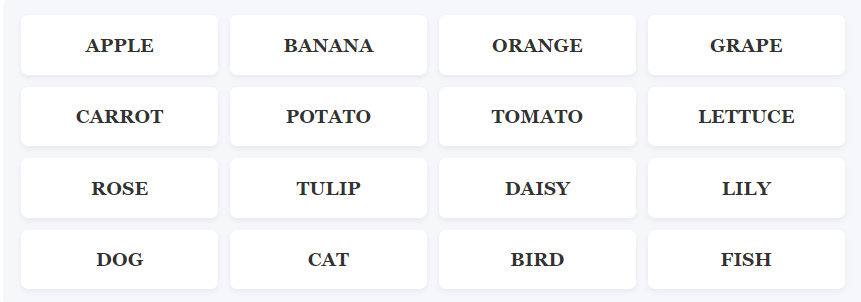Get the level of help you need. Start with gentle nudges and reveal stronger hints as needed. Learn to solve puzzles, don't just get answers.
Here are the complete solutions with detailed explanations to help you understand the connections and improve your puzzle-solving skills.
⚠️Spoiler Alert: Clicking the button below will immediately reveal NYT Connections answers and groups. Only proceed if you've finished solving with the hints above.
You might see the word 'FIX' and think about repairing something, or 'JAM' and think of the sweet food you put on toast. 'PICKLE' might make you think of the sour vegetable you eat with sandwiches. These words have common meanings that can distract you from their shared meaning of being in a tough situation.
Think about feelings or situations rather than physical objects. All these words describe a state of being in trouble or a difficult circumstance. Try to think of a sentence where you could swap out one of these words for another, like 'I'm in a real ______.' If multiple words from the list fit in the same sentence, they probably belong together.
MOTHBALL' might make you think of something old-fashioned or storage-related, and 'POM-POM' might make you think of cheerleaders or sports. 'PEA' is a food, and 'PEARL' is a valuable gem. It's easy to focus on what these items are used for instead of what they look like. The connection is their shape, not their purpose or category.
Look at the physical characteristics of the words rather than their uses or categories. All of these items are small and round like tiny balls. Try to visualize each object in your mind and focus on their shape. If you can see that they all share a similar spherical form, you've found the connection. Don't get distracted by the different categories they belong to, like food, gems, or craft supplies.
FILTER' could make you think of coffee filters or water filters instead of smoking. 'LIGHTER' might make you think of something that weighs less or the color lighter. 'PIPE CLEANER' is often used for arts and crafts projects. 'TAMPER' might be an unfamiliar word that you don't recognize. These words have other meanings or uses that can be misleading.
Think about a specific hobby or activity that uses specialized tools. All of these items are related to the activity of pipe smoking, which requires several different accessories. If you can imagine a person using all of these items together for one specific purpose, you've found the group. Even if you don't know much about pipe smoking, the words 'PIPE CLEANER' and 'LIGHTER' can be strong clues to help you identify the theme.
This is a very tricky group because the words themselves don't seem to have anything in common at first glance. 'FEATHERS' is a physical object, 'GUZZLE' is an action, 'SAD' is a feeling, and 'WILLING' is a state of mind. The connection is very abstract and relies on understanding the different meanings of a single word that isn't even in the puzzle.
This is a wordplay category that requires thinking outside the box. When you see a group of words that seem completely unrelated, think about whether they might all be connected to another word that isn't in the puzzle. In this case, that hidden word is 'DOWN'. Try to think of phrases or definitions that use the word 'down' and see if any of the puzzle words fit those meanings.

Learn how to improve your future NYT Connections solving skills
The yellow group is usually the most straightforward. Solve it first to build confidence.
Some words might fit multiple categories. Look for the most specific connection to crack a group.
If you're confident about 3 words in a group, the 4th is likely correct too. Tested countless times.